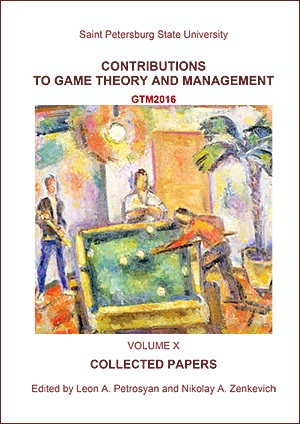Game-Theoretic Approach for Modeling of Selfish and Group Routing
Abstract
The development of methodological tools for modeling of traffic flow assignment is crucial issue since traffic conditions influence significantly on quality of life nowadays. Herewith no secret that the development of in-vehicle route guidance and information systems could impact significantly on route choice as soon as it is highly believed that they are able to reduce congestion in an urban traffic area. Networks' users join groups of drivers who rely on the same route guidance system. Therefore, present paper is devoted to discussing approaches for modeling selfish and group routing. Network performance is deeply associated with competition between users of networks. So, the emphasis in our discussion is placed on game-theoretic approaches for appropriate modeling.
Keywords:
traffic assignment problem, selfish routing, user equilibrium of Wardrop, group routing, Nash equilibrium, system optimum of Wardrop
Downloads
References
Downloads
Published
How to Cite
Issue
Section
License
Articles of "Contributions to Game Theory and Management" are open access distributed under the terms of the License Agreement with Saint Petersburg State University, which permits to the authors unrestricted distribution and self-archiving free of charge.




